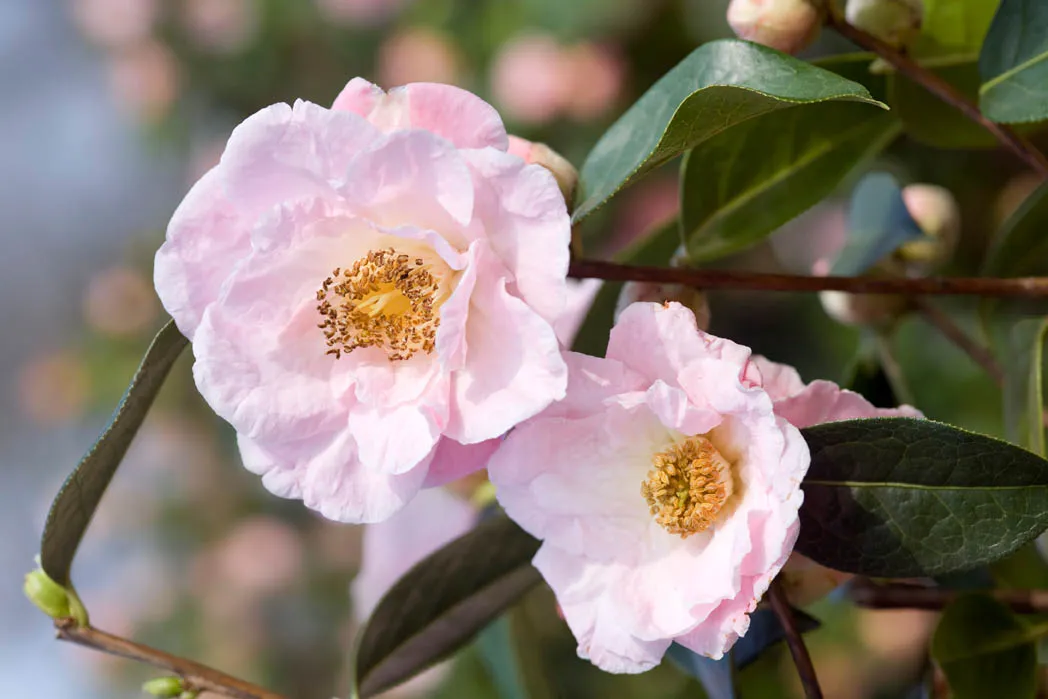Camellias brighten up many of our gardens in winter and throughout spring. They rival roses in their range of flower forms, sizes and colours and some are even scented. Unlike roses, camellias also have glossy, evergreen leaves – and no thorns.
The genus Camellia belongs in the family Theaceae, which originates in southeast Asia. The majority of the 250-plus species come from China, including the tea plant, Camellia sinensis.
The most widely grown species in gardens, however, is Camellia japonica, which originated in Japan but is also found on islands off South Korea and in southern coastal areas of mainland China. It has produced most of the cultivars grown for centuries in both China and Japan for the beauty of their flowers. Since the 1730s, when a camellia flowered in Europe for the first time – in Lord Petre's 'stove' hothouses in Essex – camellias have spread around the world, and there are now thousands of cultivars.
Camellias are the most good-tempered, varied and versatile of shrubs. Anyone can grow them; everyone should.
IN BRIEF
WHAT 250 species of shrubs and small trees in the Theaceae family.
COMMON NAME Camellia.
ORIGINS Mainly China, Japan and Korea; some tropical species from Vietnam.
SIZE Varies from 1m to 20m, depending on species and conditions; most of those in this feature will reach 6m-9m in ideal conditions if left unpruned.
CONDITIONS Acid soil in a sheltered position in partial shade; hardy to half hardy.
How to grow camellia
Where to grow camellia
Most camellias, with the exception of Camellia sasanqua and its hybrids, enjoy some shade to bring out the best colours and encourage glossy green leaves. Some forms of Camellia japonica may be shy to bloom in very heavy shade, especially as young plants.
When do camellia bloom?
Most camellia flower between winter and spring but they also have bold evergreen foliage.
The best soil for camellia
In the wild, camellias often grow in well-drained, quite heavy but acidic soil so they do well in similar conditions and are often successful in London gardens, which tend to have clay soil. They will not tolerate chalky, alkaline soils or heavy soils that become waterlogged in winter. Light, sandy or sandy-loam soils are fine if they are mixed with plenty of leaf mould or home-grown compost ahead of planting, to help retain moisture in summer.
Feeding camellia
Avoid fertilising with animal manure as this can damage young roots. A top-dressing of granular fertiliser in spring helps get young plants established but is usually not needed once roots have grown out and down. Plenty of special slow-release, pelleted fertilisers are now available for camellias and azaleas.
Watering camellia
Camellias, especially young ones, need plenty of water in dry periods in summer. Next year's flower buds form on the current year's growth around midsummer, so it is vital to avoid dry roots at this time. Otherwise there may be a carpet of fallen flower buds when the first frosts cause stress in winter. Rainwater is ideal but even alkaline tap water is better than none.
How to prune a camellia
Camellias grown in small gardens or containers benefit from regular pruning, both to keep the plants the right size and to maintain a good shape. They readily produce new shoots from old wood. Prune in spring, just after flowering has finished. On young plants, lightly cut back the previous year's growth to encourage side shoots to grow and make a bushy plant.
If necessary you can prune harder, cutting back into older wood.
Camellia problems
Black leaves
The most common problem for camellias is black leaves, where sooty mould fungus has become established on the upper surface of the leaves. The cause is usually scale insects sucking the sap from the undersides of the leaves above and dropping their excreta (sweet sticky honeydew), which makes an ideal surface for the mould fungus to grow on. Use an organic insecticide spray to kill the insects, repeating applications if necessary. The sooty mould will eventually be washed off in by rain, or can be wiped off with a damp sponge.
Camellia flower blight
Camellia flower blight is now endemic in Britain but largely goes unnoticed as it makes the blooms go brown as if they are prematurely spent. Blotches spread from small specks. Removing and binning all fallen flowers and flower parts in a council green waste bin (not the compost heap) helps to break the life cycle and reduce future infection. No sprays are available.
Vine weevil
Vine weevil larvae can cause havoc with young plants in containers. Drenching with a nematode product between March and May and again between September and October is very effective.
The best camellias to grow
PINK CAMELLIAS
Camellia japonica 'Yours Truly'
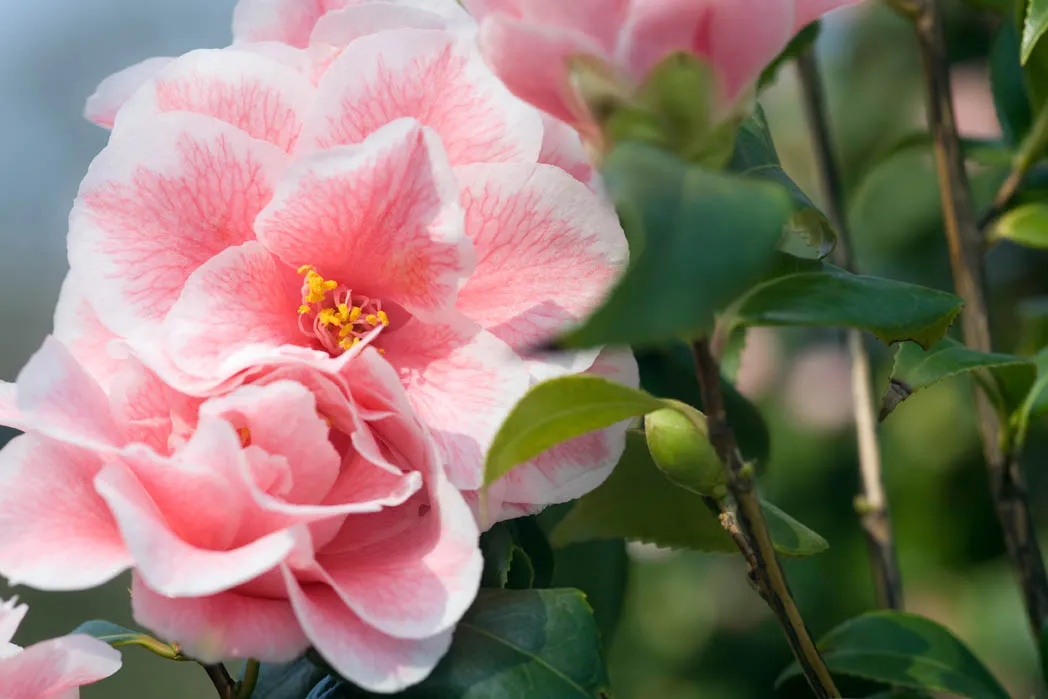
White veining on strong pink petals with white margins makes this an unusual camellia. Bushes are upright, bushy and vigorous. Season: early spring.
Camellia 'Chatsworth Belle'

This hybrid is hardy enough for the north of England. Blooms may vary but are always attractive. Season: mid to late spring.
Camellia japonica 'Desire'
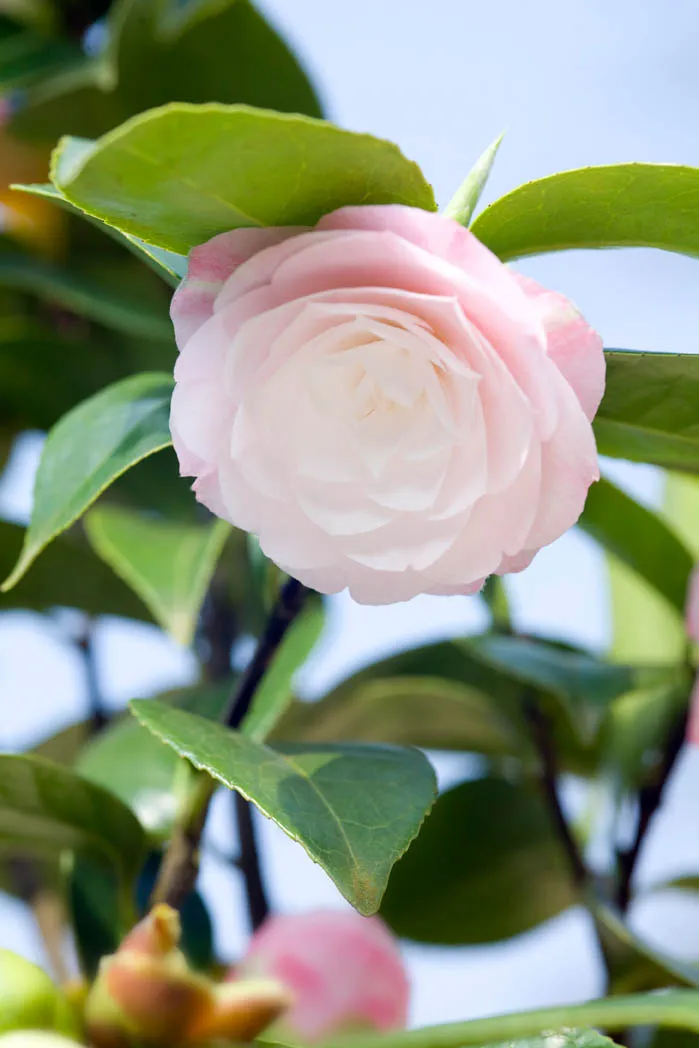
Similar to 'Commander Mulroy' (see below) but larger in flower and overall size, with an open, upright habit; good in shade. Too vigorous for most containers. AGM. Season: mid spring.
Camellia x williamsii 'Elegant Beauty'
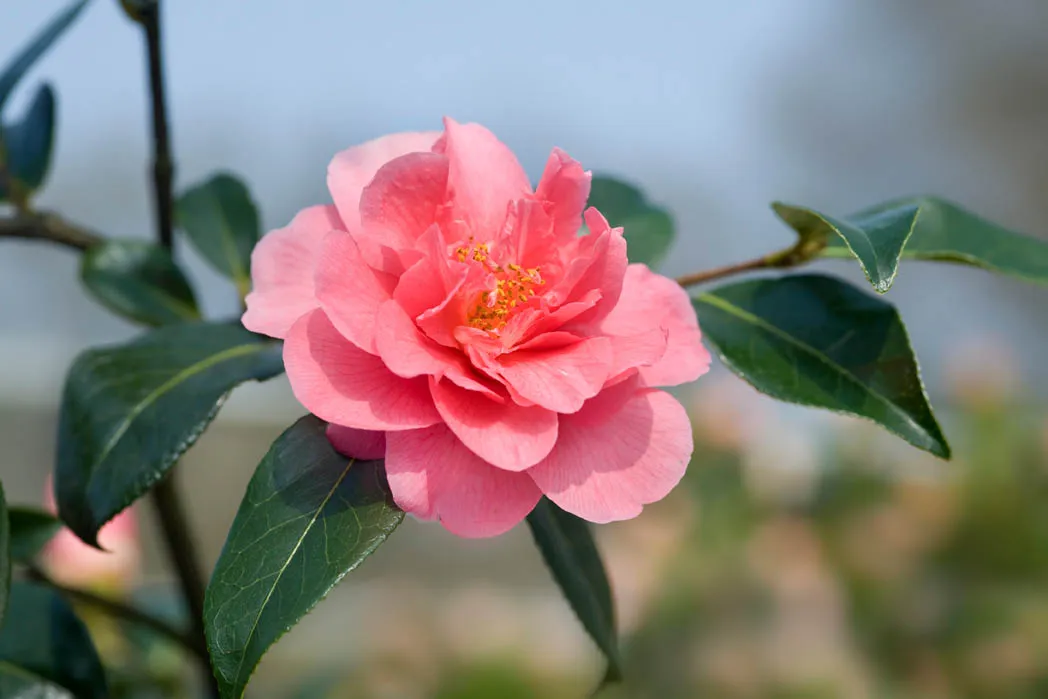
Ideal for training against walls and fences, in sun and shade, as its long shoots are easily manipulated. Young foliage is bronze. AGM. Season: late season.
Camellia 'Inspiration' (_reticulata_ × _saluenensis_)

This cultivar is very hardy, and flowers freely for up to 10 weeks. Dark, glossy leaves and dark pink flowers. AGM. Season: spring.
Camellia japonica 'Betty Foy Sanders'
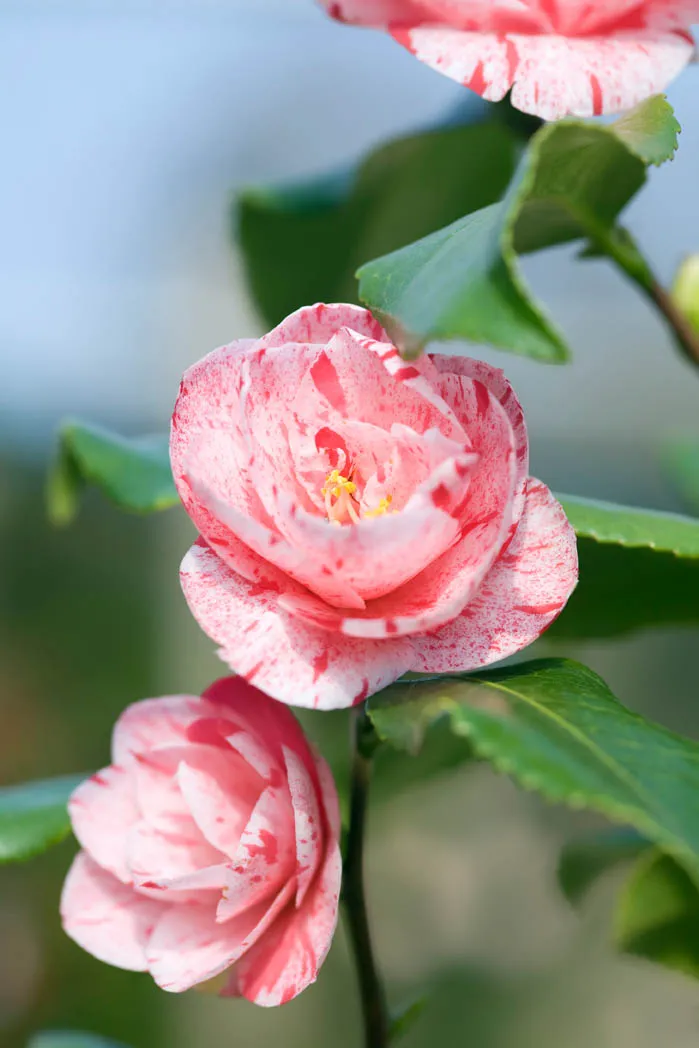
Few bi-colours are as stable as the showy yet simple blooms of this camellia. She is generous and reliable too. Compact and good for pots. Season: early to mid spring.
Camellia x williamsii 'Anticipation'
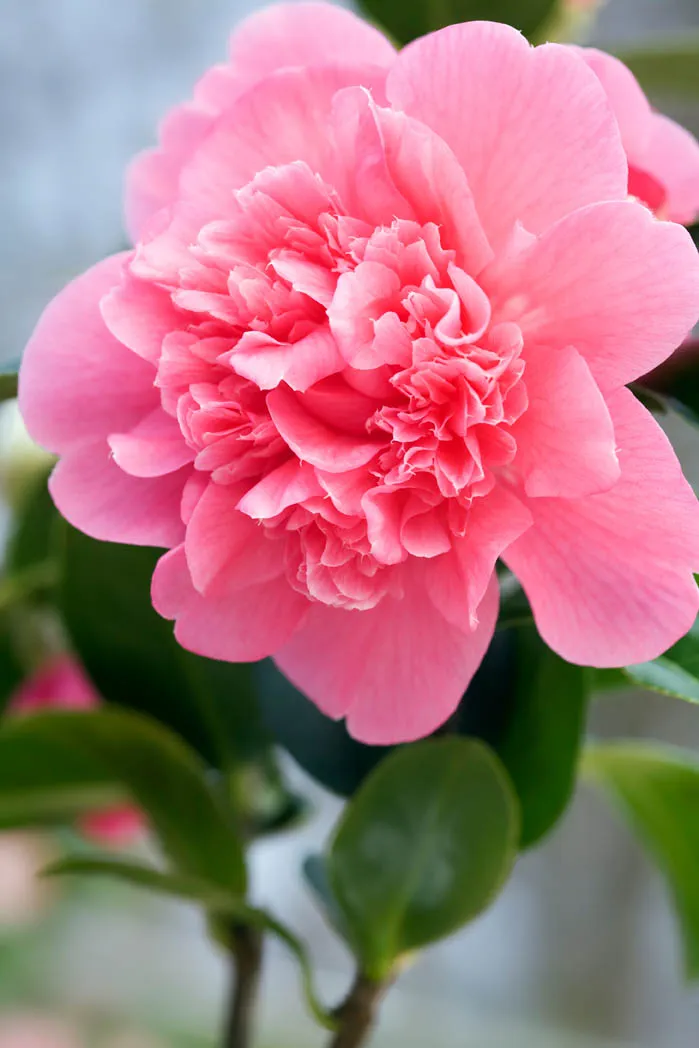
A popular and versatile hybrid. Lots of large, peony-form flowers above dark, glossy green leaves. Hardy, with a tidy, upright habit. Ideal for containers. AGM. Season: mid to late spring.
Camellia 'Blissful Dawn'

Big pink blooms, which shade to white at the base of the petals. Hardy and vigorous. Season: mid spring.
WHITE CAMELLIAS
Camellia japonica 'Lily Pons'
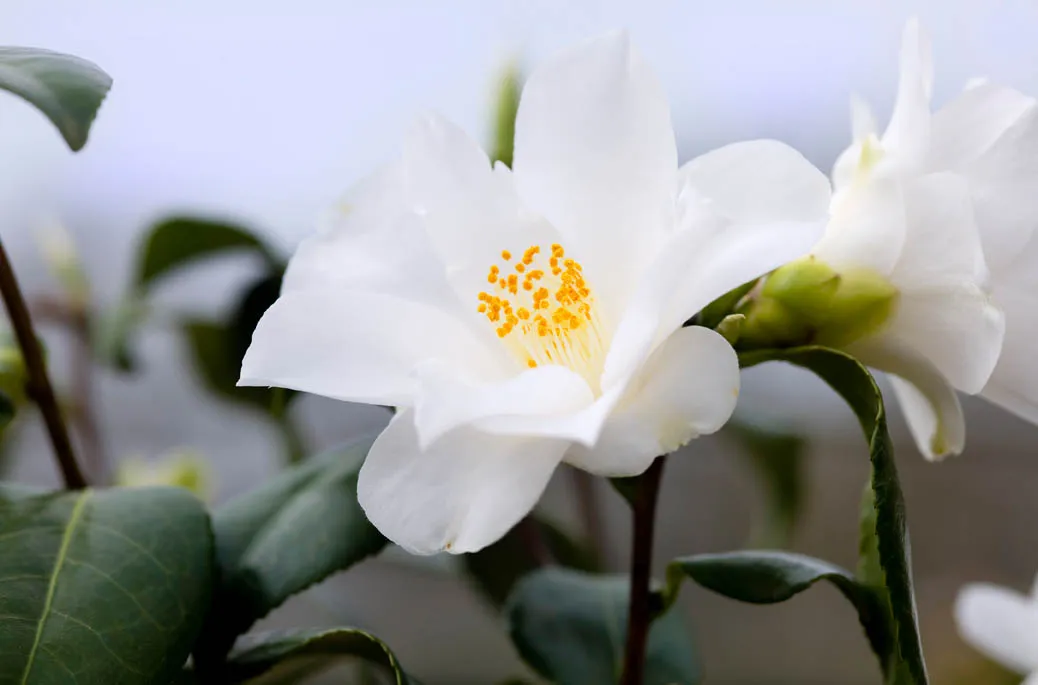
The pure white, spoon-shaped petals contrasting with golden stamens always attract attention. Some people are put off by its open, rather leggy habit as a young plant but it later forms a dense, spreading bush. AGM. Season: Mid to late spring.
Camellia x williamsii 'Bridal Gown'
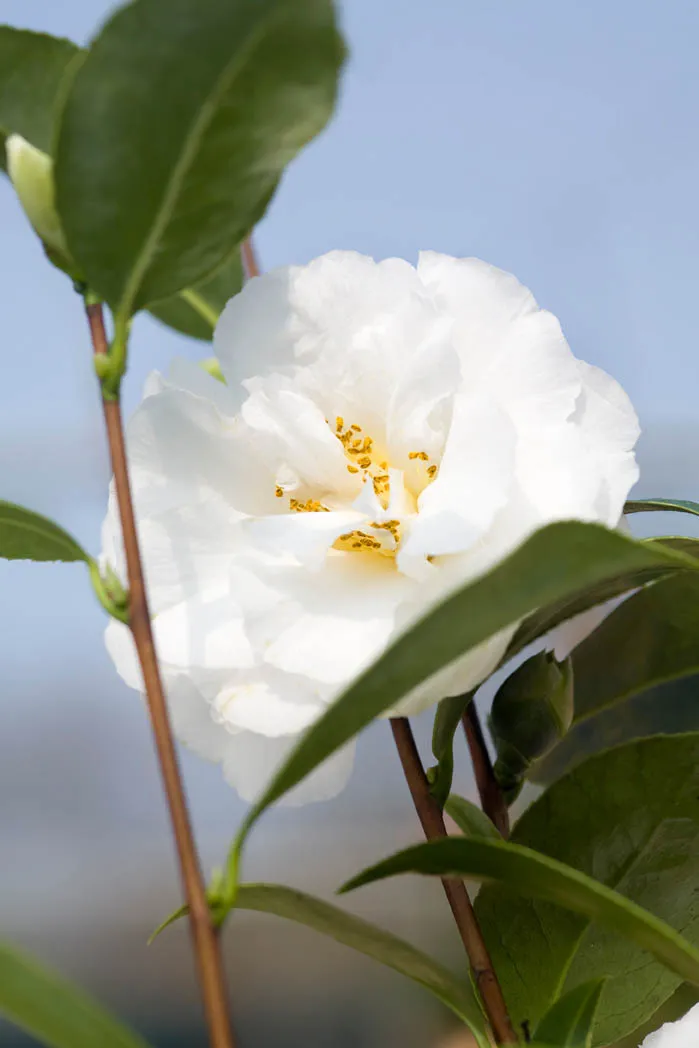
Thrives in shade, where its white blooms and relatively pale foliage look best. Very hardy, though its flowers will have more petals in warmer gardens. Season: mid to late spring.
Camellia japonica 'Commander Mulroy'
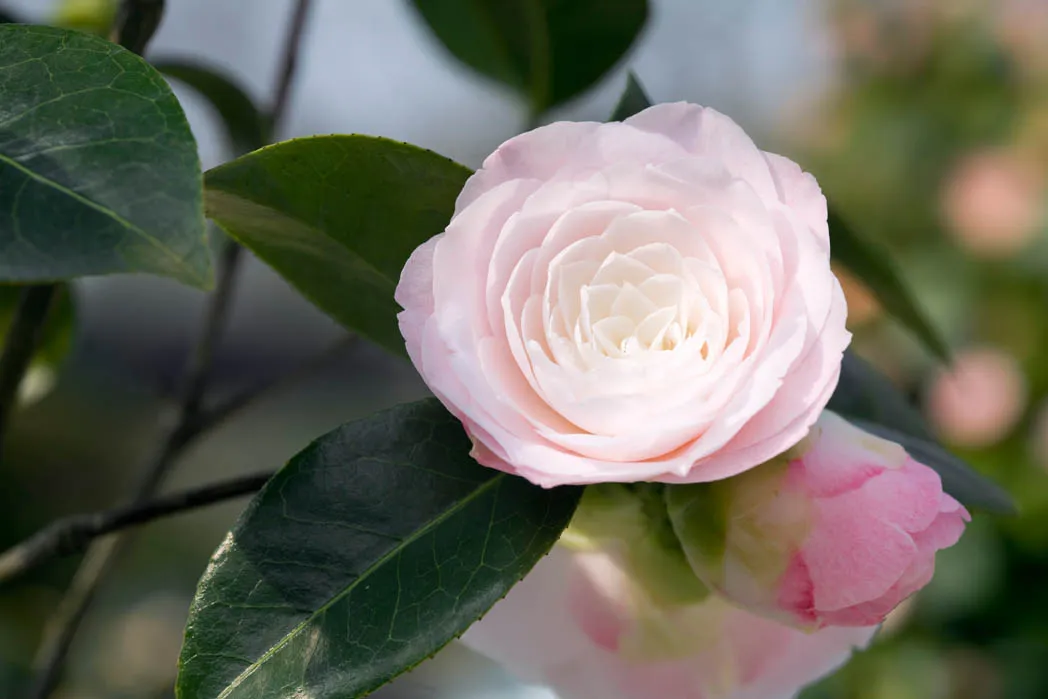
A classy camellia with excellent dark foliage that show off the formal blooms to perfection. With its compact upright habit, it is good for pots. AGM. Season: mid spring.
Camellia transnokoensis
A little gem. Small, dainty, sweetly scented flowers 8-12 weeks. Upright habit; ideal in a conservatory but hardy enough for sheltered southern gardens. AGM. Season: Jan to March.
Camellia japonica 'Lovelight'

Glorious. It needs plenty of room as it forms a big, bold bush, upright in full sun or a spreading mound in shade. Bold, dark, glossy leaves. AGM. Season: mid spring.
RED CAMELLIAS
Camellia 'Free Spirit'
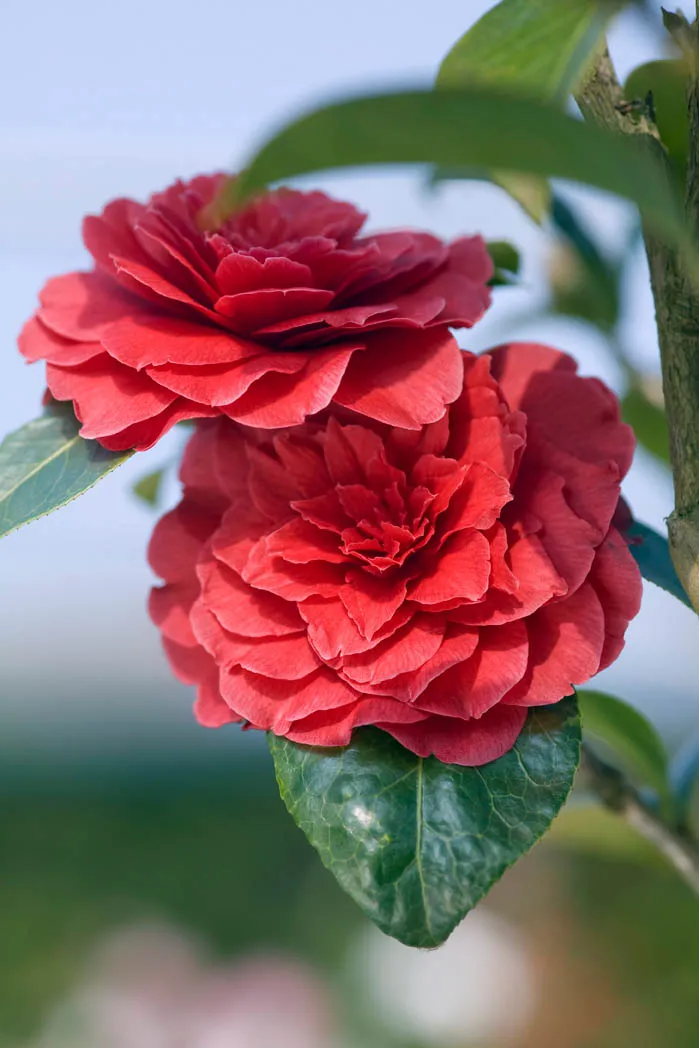
Raised at Trehane Nursery. After ten years of trialling it has proved reliable and free-flowering, and very hardy too. Season: mid to late spring.
Camellia 'Francie L'
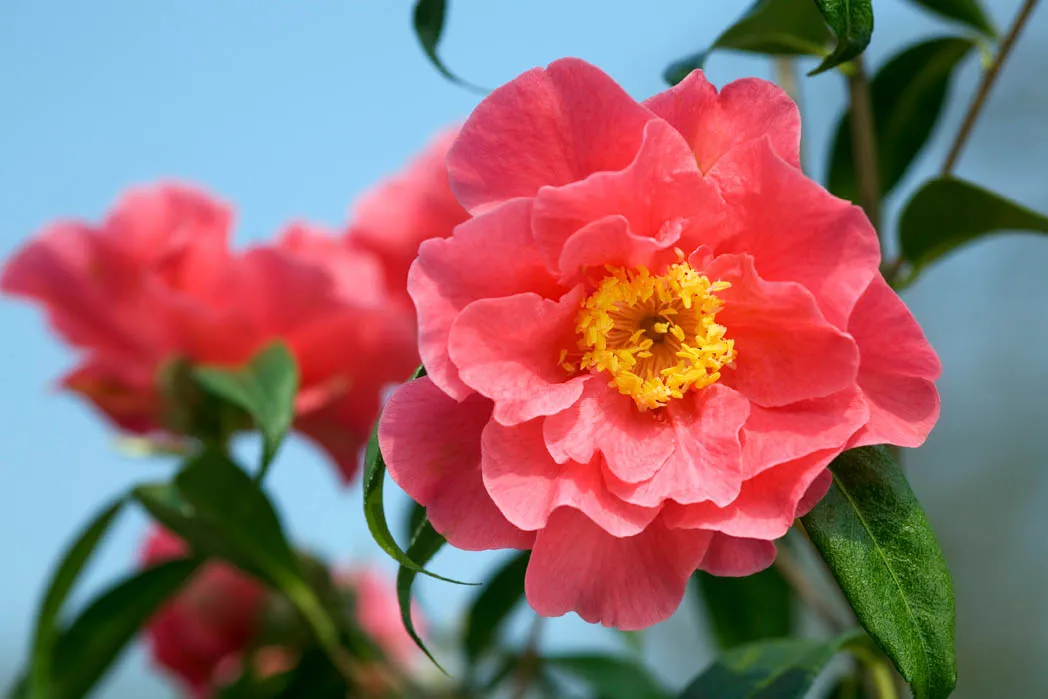
A wonderful reticulata cultivar if you have space. Large showy, blooms on well-spaced branches on a vigorous bush, ideal for training on a wall. AGM. Season: late winter to spring.
Camellia 'Doctor Clifford Parks' (_japonica_ × _reticulata_)
This hybrid of C. reticulata and C. japonica has big, bold, beautiful blooms. Branches are well spaced to allow full expansion of the flowers. AGM. Season: spring.
Camellia japonica 'Bob Hope'
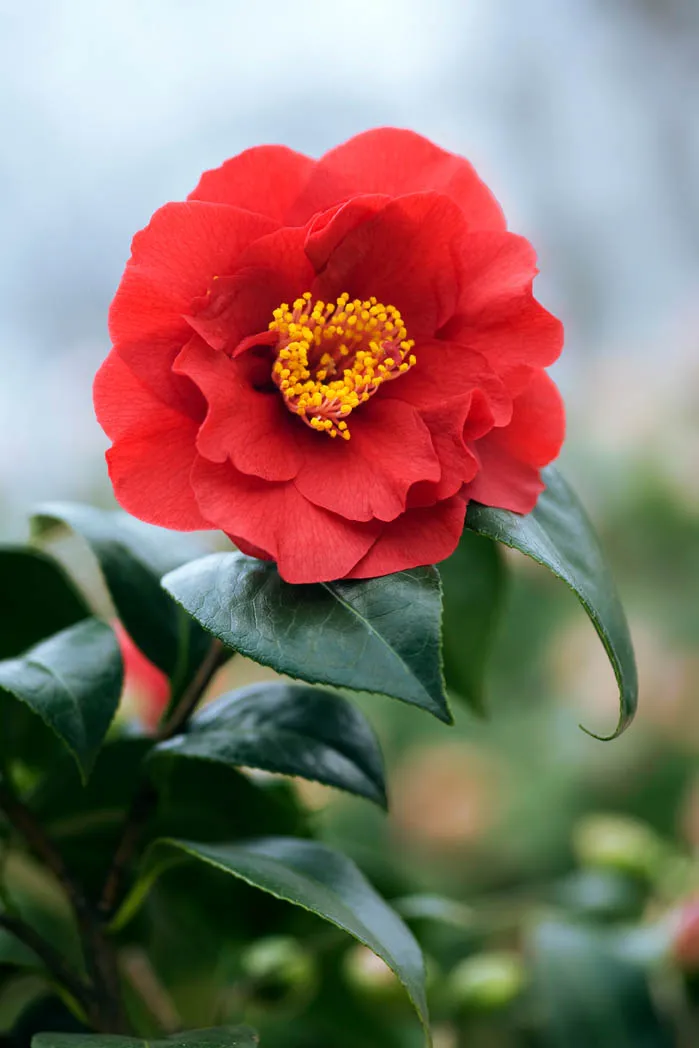
Bushy, upright, with bold leaves that look good all year round. It flowers freely. Good for containers. AGM. Season: mid to late spring.
Camellia japonica 'Bob's Tinsie'
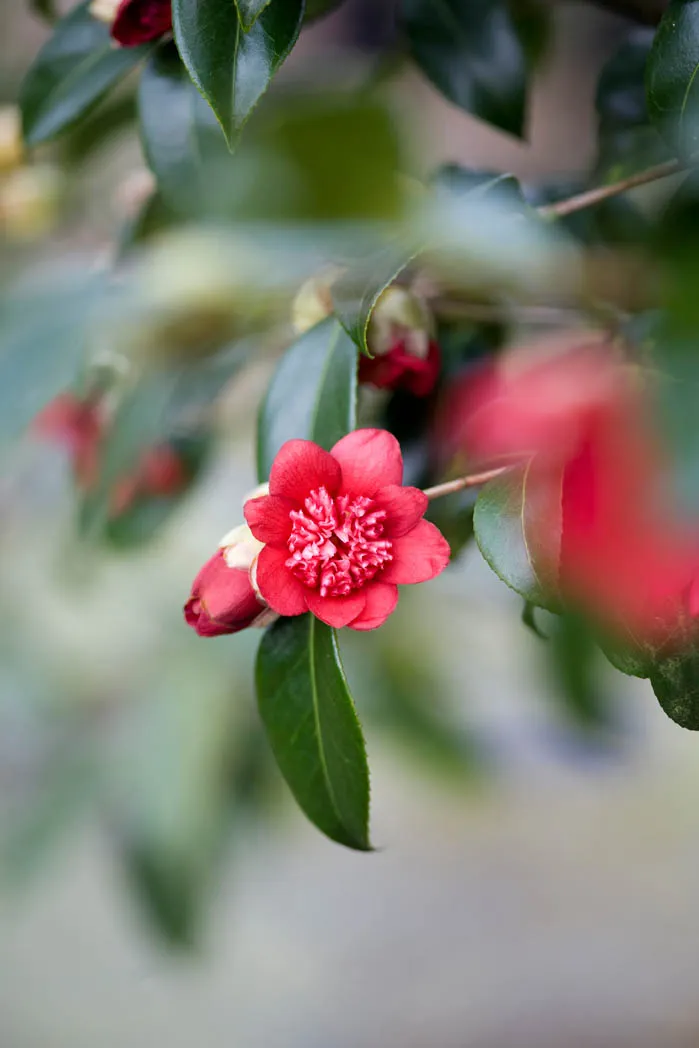
The unusual miniature, anemone form flowers of this plant give variety to a camellia collection. I love the waxy petal texture and the red tips to the stamens, which have become petaloid and emasculated. Season: mid-spring. AGM.
Camellia x williamsii 'Night Rider'

This medium-sized camellia takes a few years to get going in cool areas but makes an unusual plant in full sun with its dark, velvety petals and red-tinged leaves. Even its roots are reddish. Good in containers. Season: late spring.
You may also like...
Where to buy camellias
Stapehill Road, Hampreston, Wimborne, Dorset BH21 7NE. Tel: 01202 873490, www.trehanenursery.co.uk
Ashwood Lower Lane, Kingswinford, West Midlands, DY6 0AE. Tel: 01384 401996 www.ashwoodnurseries.com
Gwennap, Redruth, Cornwall TR16 6BJ Tel: 01209 860316 www.burncoose.co.uk
Where to see camellias
The following gardens grow at least 250 kinds of camellias.
Mount Edgcumbe House and Country Park
Cremyll, Torpoint, Plymouth PL10 1HZ. Tel 01752 822236, www.woodlandtrust.org.uk
Antony Woodland Garden
Torpoint, Plymouth PL11 3AB. Tel 01752 812191, www.nationaltrust.org.uk/antony
Marwood Hill Gardens
Near Barnstaple, North Devon EX31 4EB. Tel 01271 342528, www.marwoodhillgarden.co.uk

